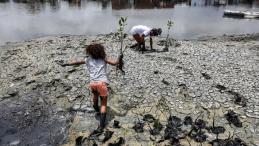On 7 October 2025, UNU-IAS co-organized an online session at the 17th International Forum for Sustainable Asia and the Pacific (ISAP 2025) on how landscape approaches align with the Nexus Approach to address interconnected environmental challenges, including biodiversity loss, water security, food production, health and climate change.
The session underscored the potential of socio-ecological landscapes and seascapes (SEPLS) to address Nexus response options identified by Intergovernmental Science-Policy Platform on Biodiversity and Ecosystem Services (IPBES), from agroecology to rights-based approaches. The Satoyama Initiative promotes SEPLS as dynamic landscapes and seascapes that sustain human well-being while preserving biodiversity through integrated management.
Opening the session, Kazuhiko Takeuchi (President, Institute for Global Environmental Strategies (IGES)), emphasized SEPLS as a model for the Nexus Approach, which seeks to maximize synergies and minimize trade-offs across sectors, as highlighted in the 2024 IPBES Nexus Assessment. Two case studies presented by Yaw Osei-Owusu and Pamela Owusuwaa from Conservation Alliance International (CAI) in Ghana discussed the Atewa Forest Reserve project, which integrated sustainable agriculture, women’s empowerment and biodiversity conservation. Siva Ramamoorthy from Vellore Institute of Technology (VIT) in India presented the restoration of sacred groves in the Kalrayan Hills, combining traditional ecological knowledge with modern conservation techniques to protect medicinal plants and enhance community resilience.
A panel discussion explored challenges, including stakeholder coordination and short-term economic pressures, while identifying enablers such as inclusive governance and community engagement to scale SEPLS globally.
A recording of the session is available on the IGES YouTube channel.


